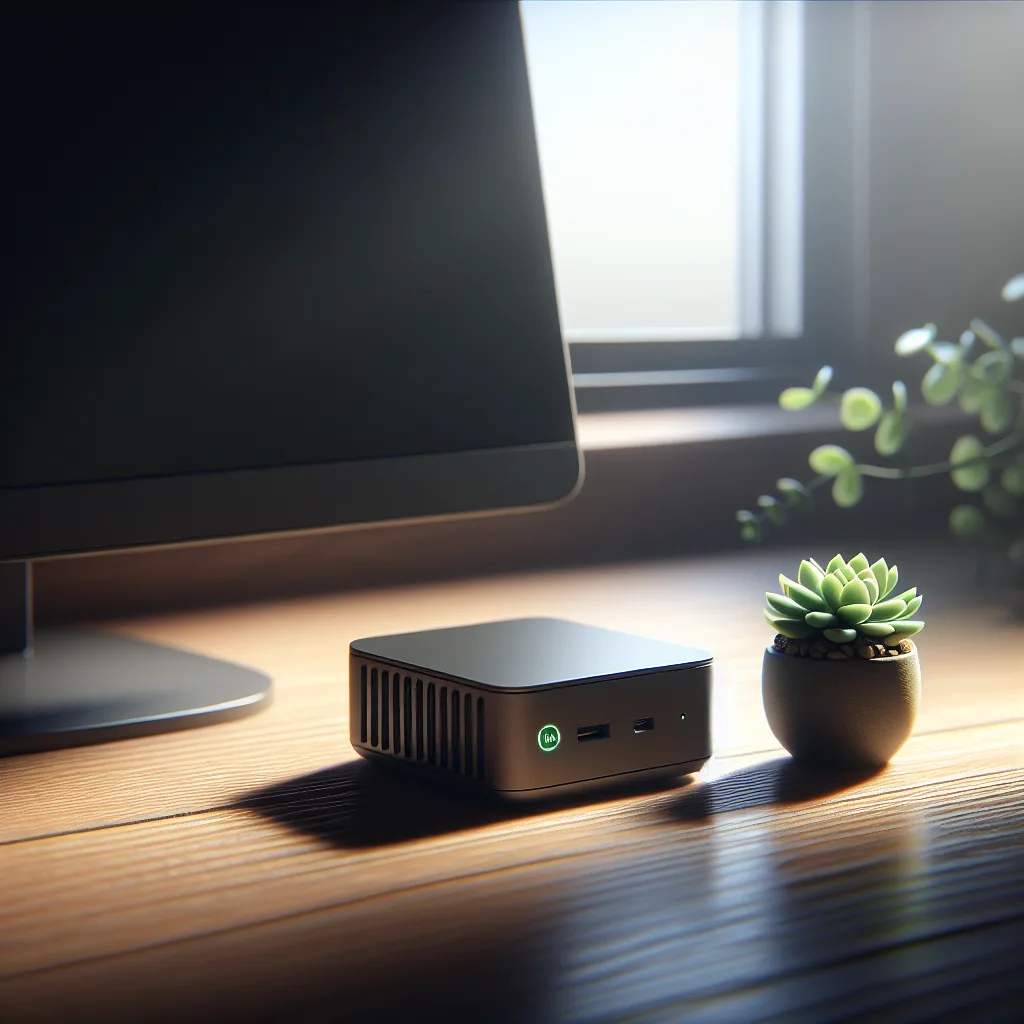A friendly guide to choosing a quiet, efficient, and beginner-friendly Mini PC or NAS for your home without breaking the bank or your electricity bill.
You’ve been thinking about it, right? The idea of having your own little server at home for backing up photos, sharing files between computers, and just generally taking control of your own data. But then the worries creep in: Isn’t that complicated? Won’t my electricity bill skyrocket? I get it. The last thing anyone wants is a noisy, power-hungry machine humming away 24/7. But what if I told you that setting up an ultra-low power home server is not only possible but also surprisingly easy and affordable?
I’ve journeyed down this exact rabbit hole, looking for a quiet, efficient, and beginner-friendly solution. The goal is simple: a small box that you can set up once, forget about, and trust to sip electricity while it reliably stores your important files. And the good news is, in 2025, the options are better than ever. You don’t need a degree in computer science to make it happen. Let’s walk through it, coffee in hand.
Why Even Bother with an Ultra-Low Power Home Server?
First off, why focus so much on “ultra-low power”? It comes down to two things: money and sanity. A traditional desktop computer running all day can add a noticeable amount to your monthly energy bill. A device that idles at just 3-5 watts, however, costs pennies to run. We’re talking less than a modern LED light bulb.
The second benefit is the peace and quiet. Low-power components generate less heat, which means they don’t need loud, whirring fans to keep them cool. Many are even passively cooled (fanless), making them completely silent. They just sit there, doing their job without making a fuss.
The Top Contenders for Your First Home Server
When you start looking, you’ll find a few great categories of devices that fit the bill perfectly. They each have their own strengths, so the right one for you depends on your budget and future plans.
1. The Modern Mini PC (Intel N-Series)
You’ve probably seen these tiny computers, sometimes no bigger than a stack of coasters. Mini PCs built around processors like the Intel N100 or N95 are fantastic candidates for a simple server.
- What they’re great for: These are the kings of low energy use. They often idle at an incredibly low 3-4 watts right out of the box, with no special tweaks needed. They are perfect if your primary goal is file storage and maybe running a lightweight application or two.
- The catch? Their biggest weakness is limited expandability. You usually get a couple of drive slots and that’s it. If you think you’ll want to add a bunch of hard drives down the line, this might feel restrictive.
- Check them out: Sites like ServeTheHome do incredibly detailed reviews on these little machines, often measuring their exact power draw.
2. The Refurbished Business Desktop (HP, Dell, Lenovo)
This is my personal favorite route for value. Companies lease powerful, reliable business desktops like the HP EliteDesk or Lenovo ThinkCentre. After a few years, they come off-lease and are sold for a fraction of their original price.
- What they’re great for: Value and flexibility! For less than the price of some new mini PCs, you can get a much more powerful machine. Models with 8th or 9th generation Intel Core i-series processors and newer are surprisingly efficient, often idling under 10 watts. Plus, they have space inside for multiple hard drives, making it a perfect DIY NAS.
- The catch? They are bigger than a mini PC, and you might wonder if they are “beginner-friendly.” The answer is a resounding yes! You don’t need to perform complex BIOS surgery. Modern operating systems are great at managing power. At most, you might pop into the BIOS (usually by pressing F2 or DEL on startup) to disable any ports you aren’t using. It’s a 5-minute task, and there are countless guides online.
Is This Actually Beginner-Friendly? A Quick Setup Guide
Okay, you’ve picked a machine. Now what? Is this the part where it gets complicated? Not at all. Setting up an ultra-low power home server for file storage is simpler than you think.
- Choose an Operating System: You don’t need a scary, command-line-only OS. You can install a regular version of Windows and simply use its built-in file-sharing features. For something a bit more focused, OpenMediaVault is a fantastic, free option. It’s designed specifically for turning a computer into a NAS and has a friendly web-based interface for management.
- Install It: Installing an OS is mostly just clicking “Next” a few times. You’ll need a USB stick and about 30 minutes.
- Create Your Shared Folders: Once your OS is running, you’ll go into the settings, create a folder (e.g., “Photos,” “Documents,” “Backups”), and set it to be shared on your network.
- Connect from Your Other Devices: On your main PC or Mac, you’ll see this new shared drive appear on your network. You can map it as a network drive so it shows up just like your C: drive. That’s it!
So, which should you choose?
- If you want the absolute smallest, quietest, and most power-efficient box for simple file storage and you’re confident you won’t need more storage space later, an Intel N100 mini PC is a brilliant choice.
- If you want the best bang for your buck and the flexibility to expand in the future, a refurbished HP, Dell, or Lenovo business desktop is unbeatable. The slightly higher idle power is a tiny price to pay for so much more capability.
Either way, you’re on the right track. The dream of a silent, cheap-to-run home server is well within your reach. Happy tinkering!
